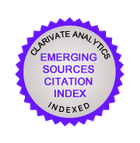1. Amate L., Gil A., Ramirez M. Dietary long-chaine polyunsaturated fatty acids from different sources affect fat and fatty acid excretions in rats. The Journal of Nutrition, 2001, vol. 131, no. 12, pp. 3216-3221. https://doi.org/10.1093/jn/131.12.3216
2. Belluzzi A., Boschi S., Brignola C., Munarini A., Cariani G., Miglio F. Polyunsaturated fatty acids and inflammatory bowel disease. American Journal of Clinical Nutrition, 2000, vol. 71, suppl. 1, pp. 339S-342S. https://doi.org/10.1093/ajcn/71.1.339s
3. Broughton K. S., Liebman M., Kleppinger K. M., Johnson C. S., Pace B. K. Reduced asthma symptoms with n-3 fatty acid ingestion are related to 5-series leukotriene production. American Journal of Clinical Nutrition, 1997, vol. 65, no. 4, pp. 1011-1017. https://doi.org/10.1093/ajcn/65.4.1011
4. Carlson S. E., Ford A. J., Werkman S. H., Peeples J. M., Koo W. W. K. Visual acuity and fatty acid status of term infants fed human milk and formulas with and without docosahexaenoate and arachidonate from egg yolk lecithin. Pediatric Research, 1996, vol. 39, no. 5, pp. 882-888. https://doi.org/10.1203/00006450-199605000-00024
5. Carlson S. E. Long chain polyunsaturated fatty acids in infants and children. Annales Nestlé, 1997, vol. 55, no. 2, pp. 52-62.
6. Dietary supplementation with w-3-polyunsaturated fatty acids and vitamin E after myocardial infarction: results of the GISSI-Prevenzione trial. Lancet, 1999, vol. 354, no. 9177, pp. 447-455. https://doi.org/10.1016/s0140-6736(99)07072-5
7. Filer L. J., Ziegler E. E. Essential dietary lipids. Present knowledge in nutrition. 7th ed. Washington, 1996, pp. 58-67.
8. Hoffman D. R., Birch E. E., Birch D. G., Uauy R., Castañeda Y. S., Lapus M. G., Wheaton D. H. Impact of early dietary intake and blood lipid composition of long-chain polyunsaturated fatty acids on later visual development. Journal of Pediatric Gastroenterology and Nutrition, 2000, vol. 31, no. 5, pp. 540-553. https://doi.org/10.1097/00005176-200011000-00016
9. Jeffrey B. G., Mitchell D. C., Neuringer M., Weisinger H. S. The role of docosahexaenoic acid in retinal function. Lipids, 2001, vol. 36, no. 9, pp. 859-871. https://doi.org/10.1007/s11745-001-0796-3
10. Jørgensen M. H., Hernell O., Hughes E. L., Michaelsen K. F. Is there a relation between docosahexaenoic acid concentration in mothers’ milk and visual development in term infants? Journal of Pediatric Gastroenterology and Nutrition, 2001, vol. 32, no. 3, pp. 293-296. https://doi.org/10.1097/00005176-200103000-00011
11. Judge M. P., Harel O., Lammi-Keefe C. J. A docosahexaenoic acid-functional food during pregnancy benefits infant visual acuity at four but not six months of age. Lipids, 2007, vol. 42, no. 2, pp. 117-122. https://doi.org/10.1007/s11745-006-3007-3
12. Koletzko B., Agostoni C., Carlson S. E., Clandinin T., Hornstra G., Neuringer M., Uauy R., Yamashiro Y., Willatts P. Long chain polyunsaturated fatty acid (LC-PUFA) and perinatal development. Acta Paediatrica, 2001, vol. 90, no. 4, pp. 460-464. https://doi.org/10.1080/080352501750126492
13. Kremer J. M., Lawrence D. A., Petrillo G. F., Litts L. L., Mullaly P. M., Rynes R. I. et al. Effects of high-dose fish oil on rheumatoid arthritis after stopping nonsteroidal anti-inflammatory drug. Clinical and immune correlates. Arthritis and Rheumatism, 1995, vol. 38, no. 8, pp. 1107-1114. https://doi.org/10.1002/art.1780380813
14. Sanjurjo P., Ruiz-Sanz J. I., Jimeno P., Aldámiz-Echevarría L., Aquino L., Matorras R., Esteban J., Banqué M. Supplementation with docosahexaenoic acid in the last trimester of pregnancy: maternal-fetal biochemical findings. Journal of Perinatal Medicine, 2004, vol. 32, no. 2, pp. 132-136. https://doi.org/10.1515/JPM.2004.024
15. Schachter H. M., Reisman J., Tran K., Dales B., Kourad K., Barnes D., Sampson M., Morrison A., Gaboury I., Blackman J. Health effects of omega‐3 fatty acids on asthma. Evidence report/technology assessment. No. 91. Rockville, Agency for Healthcare Research and Quality, U. S. Department of Health and Human Services, 2004. 103 p.
16. UNICEF. Vitamin & mineral deficiency: a global progress report. Ottawa, The Micronutrient Initiative, 2004. Available at: https://www.unicef.org/media/files/vmd.pdf (accessed 25.06.2019).
17. Voigt R. G., Jensen C. L., Fraley J. K., Rozelle J. C., Brown F. R., Heird W. C. Relationship between omega-3 longchain polyunsaturated fatty acid status during early infancy and neurodevelopmental status at 1 year of age. Journal of Human Nutrition and Dietetics, 2002, vol. 15, no. 2, pp. 111-120. https://doi.org/10.1046/j.1365-277x.2002.00341.x
18. Wolff R. L., Bayard C. C. Fatty acid composition of some pine seed oils. Journal of the American Oil Chemists’ Society, 1995, vol. 72, no. 9, pp. 1043-1046. https://doi.org/10.1007/bf02660719
19. Isaev V. A. Polyunsaturated fatty acids and their role in the cerebral circulation. Available at: http://www.kmaslo.ru/index039c.php?cnt=articles&item=11 (accessed 24.06.2019) (in Russian).
20. Netrebenko O. K. Some essential trace elements in the nutrition of premature babies. Moscow, Nestle Fud Publ., 2004. 136 p. (in Russian).
21. Nikonovich S. N., Timofeenko T. I., Grin' N. F. Functional properties of fat products of a new generation. Izvestiya vysshikh uchebnykh zavedenii. Pishchevaya tekhnologiya = News of Institutes of Higher Education. Food Technology, 2006, no. 1, pp. 18-20 (in Russian).
22. Ottaway P. B. Food fortification and supplementation: technological, safety and regulatory aspects. Cambridge, Woodhead Publishing Ltd, 2008. 269 p. https://doi.org/10.1201/9781439832820
23. Rudakov O. B., Ponomarev A. N., Polyanskii K. K., Lyubar’ A. V. Fats. Chemical composition and quality expertise. Moscow, DeLi print Publ., 2005. 311 p. (in Russian).
24. Tsibulevskii A. Yu., Eletskii Yu. K. Tissue basophils of the gastrointestinal tract and their role in physiological and pathological processes. Arkhiv anatomii, gistologii i embriologii [Archive of Anatomy, Histology and Embryology], 1991, vol. 100, no. 2, pp. 92-100 (in Russian).



































